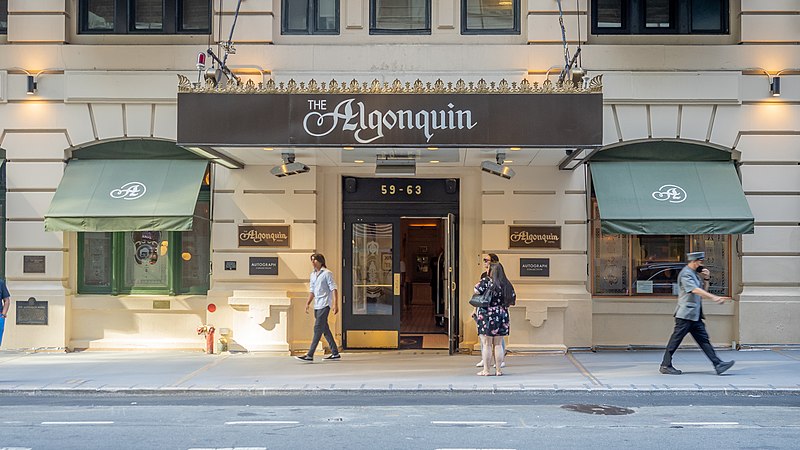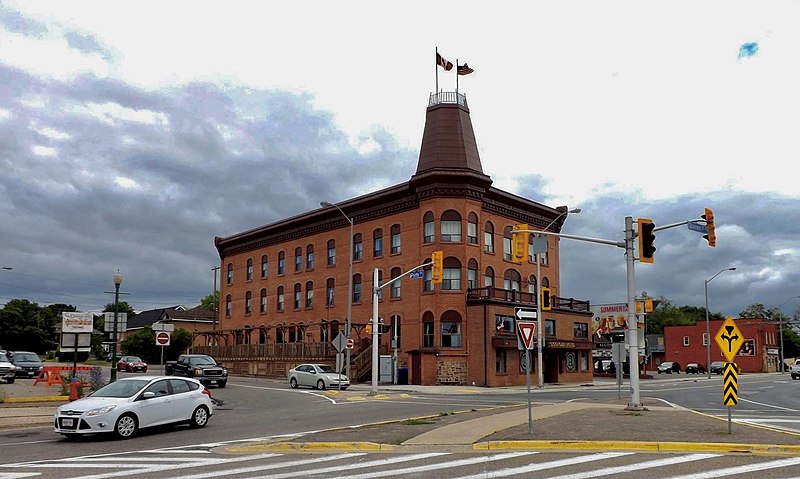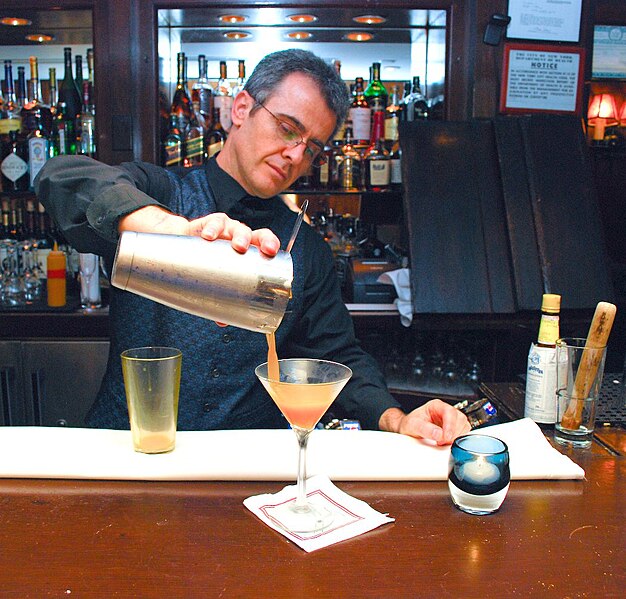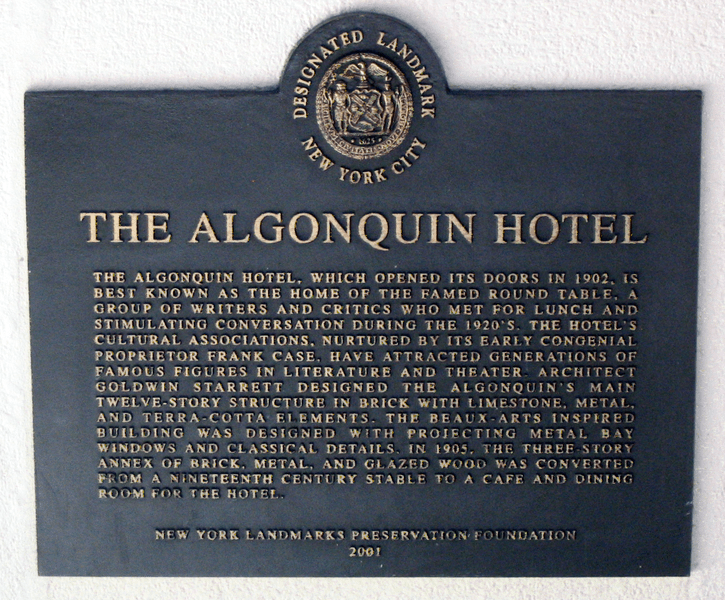Background
In the center of New York City, there is a historic landmark called the Algonquin Hotel. Since it originally opened its doors in 1902, it has been a well-liked hangout for both residents and tourists. It is located on West 44th Street, only steps from Times Square and Broadway. The hotel is a popular among tourists looking for a genuine New York City experience due to its rich history and distinctive appeal.
No matter why a visitor chooses to stay at the Algonquin Hotel—whether it’s for its historical significance, its creative atmosphere, or its enviable location—it guarantees a uniquely unforgettable New York experience. The hotel’s humble beginnings, some fascinating facts, its architectural design, and some of its portrayal as a filming site in movies and/or TV series are all covered in the following paragraphs.
History of Algonquin Hotel
The Algonquin Resort was built during the illustrious era of Queen Victoria, who ruled the United Kingdom from 1837 to 1901. In 1889, St. Andrews, New Brunswick’s first coastal resort town, welcomed visitors with the opening of the Algonquin Resort. At that time, a room cost anywhere from $3 to $5 a day. The Algonquin Golf Course opened five years later, introducing the illustrious sport to the tranquil tourist community.
The Painter Wing’s completion in 1908 signaled the beginning of several renovations that would have an effect on the resort. A six-story Kitchen Wing, which was another resort development by 1912, included more guest rooms and modernized the facilities. A year later, the Casino, which included a magnificent ballroom, a pool room, and a bowling alley, opened. Only the Painter Wing, the Kitchen Wing, and the two were preserved when the majority of the building fell in 1914. The Algonquin Resort reopened a year after construction was completed. It had a red-brick roof and a fresh Tudor Revival front. The installation of a telephone system and power in every guestroom resulted in a $4–$7 daily price rise for a room.
The Algonquin property was selected “Canada’s Resort of the Year” by The Canadian Travel and Tourism Industry Association in 1991 following a $3.7 million addition that added a rooftop garden and conference center to the property. The Prince of Wales Wing, which brought over 50 more rooms and suites to the resort, was later added by the property’s owners in 1993. In 2012, the establishment briefly shut its doors so that a $30 million makeover could be completed. Two years later, the Algonquin Resort reopened with an indoor pool, balcony suites, outdoor hot tubs, and many other cutting-edge facilities. One of New Brunswick’s most sought-after getaways is still this magnificent location.
Quick Facts about Algonquin Hotel
Guests from many walks of life, including heads of state and nobility, have been welcomed at the Algonquin Resort. Since 1889, when it was advertised as a healthy refuge from city life, tourists have been attracted to it. In 2014 and 2015, Condé Nast readers named it one of the world’s top resorts. Here are a few short facts on the old hotel.
- The Algonquin Hotel reopened last March 2014.
- It has a total of 233 guestrooms and suites.
- There are two restaurants – the Braxton’s Restaurant & Bar and The Clubhouse at the Algonquin Golf Course.
- There are four options for every guest when it comes to dining – the Braxton’s Restaurant & Bar, The Clubhouse at the Algonquin Golf Course, In-Room Dining or Anyplace Dining.
- For pool areas, there is one indoor pool with three-story waterslide, a hot tub and an outdoor pool.
- The Algonquin Golf Course has an area of 7,000-yard, par 72 course with practice facility designed by Thomas McBroom.
- For meeting spaces, there is approximately 19,000 square feet area with three main ballrooms.
- The hotel was named for the region’s native Algonquin people.
Architectural Style of Algonquin Hotel
One of the oldest still in operation hotels in New York is the 181-room Algonquin Hotel, which was built in 1902 and declared a historic landmark in 1987. Stonehill Taylor directed the 2022 renovation of the Beaux-Arts style building and interior design of the ground floor public areas, including the Blue Bar and the Oak Room, by integrating modern lighting and furniture into the original classical setting.
The hotel was well known for hosting frequent artist gatherings. Daily lunch gatherings were held in the Oak Room’s Algonquin Round Table in the 1920s, and writers, Broadway playwrights, poets, and musicians frequently attended. The Algonquin’s new interior decor pays homage to the elegance of this unique era in New York City’s history. The new decorative items should feel contemporary, and the architectural lighting should draw attention to the room’s existing characteristics.
HB Lighting and Stonehill Parker collaborated to create unique ornamental fixtures for every area of the room. Functional and accent lighting were managed by the local company Reveal Design Group in collaboration with Jeffrey Nathan Lighting Design. A sculptural modern welcome desk with a marble top and a golden inverted-step base with hidden lights can be seen in the newly remodeled lobby. An intimate seating area is made possible by backlit bookcases. The elaborate molding, paneling, and ancient Corinthian columns in the lounge are highlighted by cove lighting, which contrasts with the contemporary round and spherical chandelier fittings. LED strip lights are used by HB Lighting to illuminate the acrylic disks in their custom chandeliers.
The Oak Room was redesigned by Stonehill Taylor to serve as a venue. Champagne-colored metal ceiling fittings with hanging linear LED lights have an interconnecting design. The Blue Bar was moved back to its original spot in the present-day main lobby. A focal point is created by bar shelves with dimmable LEDs embedded. The blue glow is provided by theatrical lighting that is installed on the ceiling. A linear, dimmable LED tape light serves as the outside halo. A catenary chandelier with dimmable LEDs hangs above a rendition of the Round Table at one end of the space. The dining room has hand-blown white glass globes hanging from NH S3 brass and blackened metal chandeliers, which are surrounded by seating sections.
Representation in Movies and/or TV Shows
At the Algonquin Round Table, the group that they had established there, authors and performers congregated from 1919 through 1929. Undoubtedly, Algonquin Hotel has served as the backdrop for a lot of films and television series. They are as follows:
- Mrs. Parker and the Vicious Circle (1994)
- The Unknown Marx Brothers (1993)
- Nothing But Nerves (1942)
- The Trouble with Husbands (1940)
- Waiting for Baby (1941)
- The Witness (1942)
- The Man’s Angle (1942)
- Traffic Regulations (1929)
- Humorous Flights (1929)
- Mr. W’s Little Game (1934)
- American Masters Episode: The Algonquin Round Table: The Ten-Year Lunch (1987)
- Young Sheldon Episode: Pongo Pygmaeus and a Culture that Encourages Spitting (2019)
- Late Night with David Letterman Episode: Episode dated 4 November 1985 (1985)
- They All Laughed (1981)
- Rich and Famous (1981)
- 9 ½ Weeks (1986)
- Nancy LaMott: I’ll Be Her with You (2008)
- Play Ball I (1925)
- The Sonnet Project Episode: Sonnet #103 (2015)
Conclusion
In conclusion, the Algonquin Hotel is a literary and cultural marker in New York City that has a rich history. Throughout its history, the hotel has hosted a number of illustrious authors, actors, and singers and is still a well-liked hangout for both visitors and residents.
With its exquisitely designed rooms and suites, famed Round Table restaurant, and Blue Bar, the Algonquin Hotel provides a distinctive and opulent ambiance. A fitness facility, business center, and concierge services are among the other features and services provided by the hotel. Overall, The Algonquin Hotel offers its visitors a unique and unforgettable experience by fusing luxury and history in one of the world’s most energetic cities.




